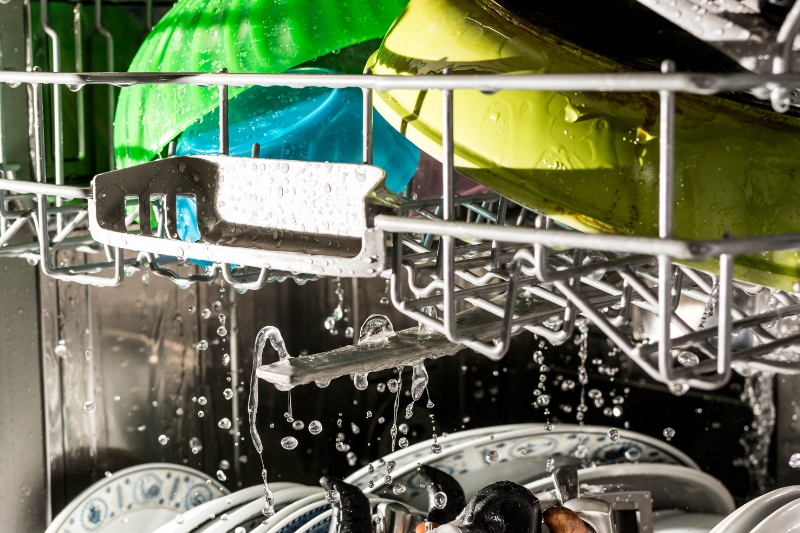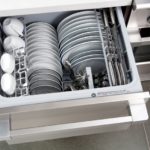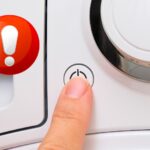There are several reasons why a dishwasher may not be draining. Thankfully though, the common reasons why a dishwasher may not drain the water are all easily fixed.
In most cases, a dishwasher that isn’t draining has a clog somewhere in the system. This can either be in the filter of the dishwasher or in the drain valve or hose.
Cause 1: Blocked Filter
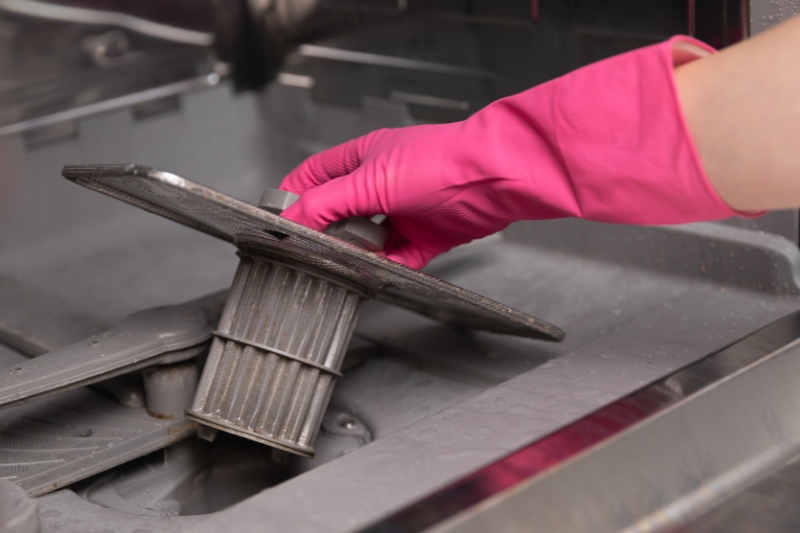
The first thing to do is locate your dishwasher’s filter. This is typically located on the floor of your dishwasher, underneath the bottom dish rack, usually in one of the back corners or in the centre.
Remove the filter by rotating it. You should see quickly whether it is clogged or not. If it is clogged, it will likely have food residue covering it.
To clean the filter, fill your sink with warm water and leave it to soak for at least half an hour, although the longer you leave it, the easier it will be to remove the build-up.
Then, grab a sponge or soft brush (some people use a toothbrush to get into the filter). Remove all of the food built-up on the filter.
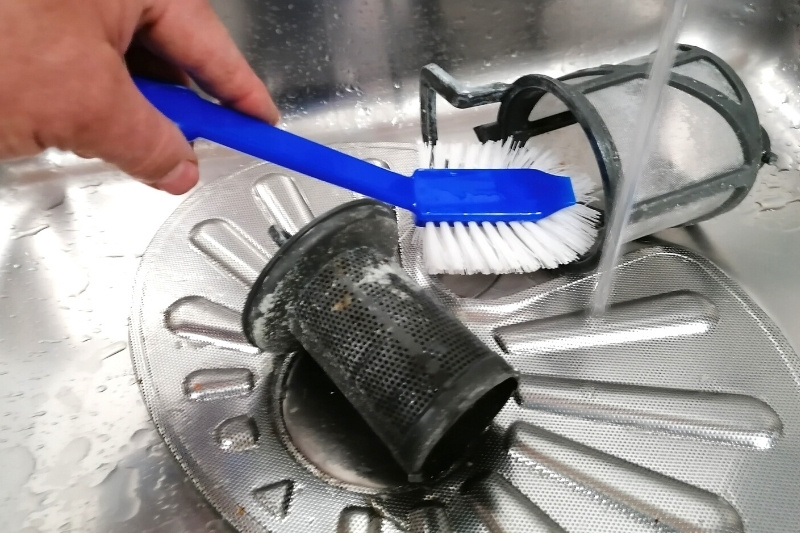
You can then return the filter to your dishwasher, ensuring it is securely in place.
If the filter turns freely in the housing, it is not seated correctly. Just push down on the filter as you turn it clockwise, and you should feel it glide into place.
Now you can give the dishwasher a test. If the water drains away, your problem is solved. If it doesn’t drain correctly, you may have a clog lower down in the draining system, which is what we’ll tackle next.
Cause 2: Blocked Drain Valve or Hose

These parts of the draining system of a dishwasher are harder to access than the filter.
Thankfully, access to these parts often isn’t needed to free up a clog. Instead, you can add bicarbonate of soda and vinegar to the dishwasher. This should be done in a one-to-one mixture. Usually, a cup of each is enough to get the job done.
Leave the solution in the bottom of the dishwasher for at least 20 minutes. However, just like before, the longer you leave it, the better it will work.
Keep checking the dishwasher during this time. If the standing water in the bottom of the dishwasher begins to drain, the solution is working.
Next, you can run a rinse cycle to test whether the blockage has been cleared. If you notice some water remaining in the dishwasher after the rinse cycle, this is an indication that you’ll need to repeat the process.

While you can use drain cleaners and unblockers for this step rather than the bicarb and vinegar solution, you will need to run your dishwasher through a cleaning cycle after using these chemicals.
We hope this look at how to unclog a dishwasher that isn’t draining has been helpful. If it hasn’t solved your dishwasher issues, we do have several other articles diagnosing and fixing common issues with dishwashers that may help.
We also have lists of the best dishwashers for all budgets available in the UK if your dishwasher is beyond repair.

In The Wash is your guide to the best laundry and cleaning products, tips and tricks. Our mission is to solve the UK’s cleaning and laundry dilemmas!
